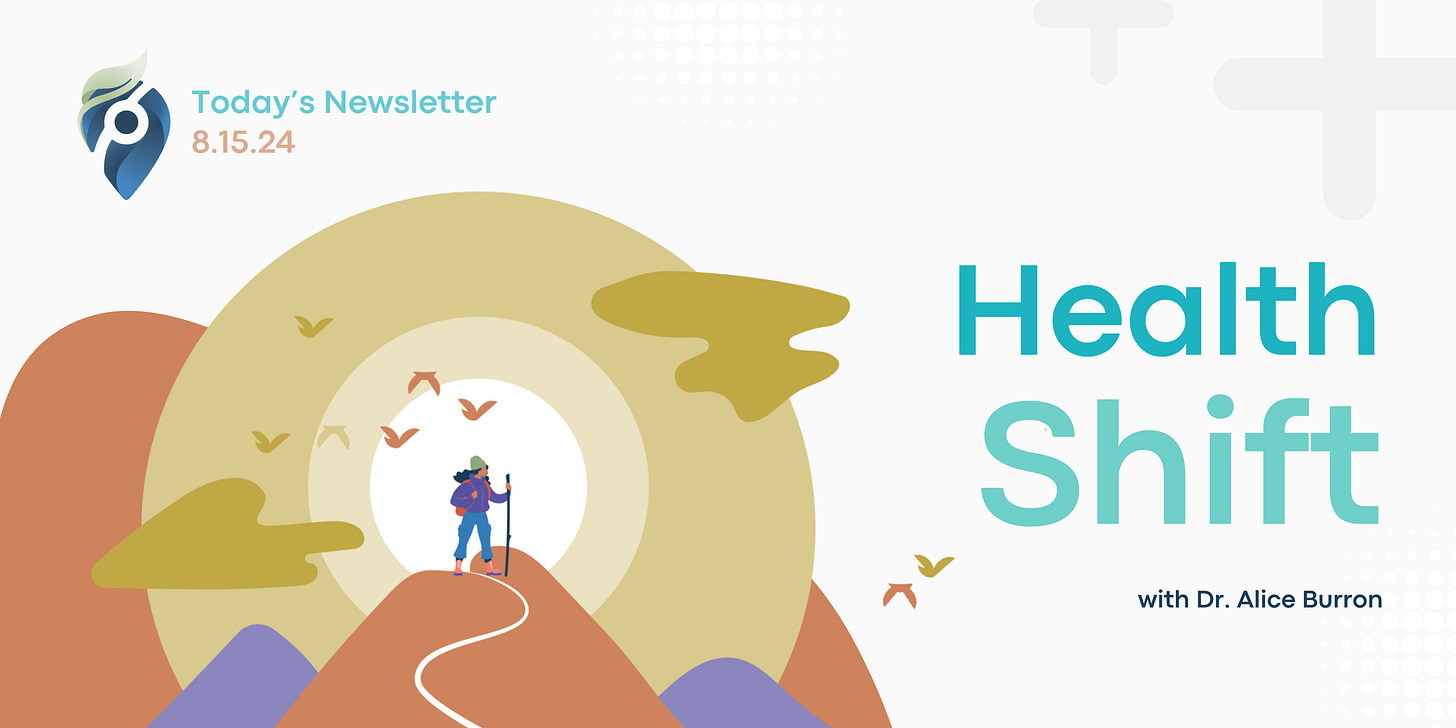What's a health-seeker to do? A tactic for navigating headlines like a health hero.
Why you don’t need to compare your diet to Olympic athletes' diets and other thought-provoking health news this week.
Good morning, everyone!
Last week, I shared with you a system for labeling your health news and information that helps put you back in the driver's seat, rather than being swayed by emotional “rage bait” or advertisements designed to sell you a cure.
Not all health information is equal in value, so how do you sort out the wheat from the chaff?
Here’s a link back to the system if you need a refresher, but it’s a simple as this:
Picture a label for each headline you read. Each one is a “bucket” or category into which you can sort each piece of content. Ask yourself what bucket the health information fits into and immediately call it out for what it is:
Buy and try. Designed to convince you to purchase something (from a $2 app to a $68 supplement bottle and everything in between.)
Empowering. Information trying to clarify health concerns or approaches.
Scare tactic. Information that attempts to emotionally influence you to take the action they recommend. (This can also fall under the label of buy-and-try, but they elevate the concern to evoke strong emotions.)
Caring. Information that is encouraging, supporting, or validating. May or may not contain valuable information.
Educating and informative. Information that attempts to educate people. Again, it may or may not contain actual credible information.
Opinion. Content that offers an opinion on a health topic—sometimes to vent or gain notoriety or popularity—but it could also offer an alternative perspective. Be sure to trust the person giving the opinion before falling prey to it.
As for my work here at Health Shift, I aim to make my articles empowering, caring, educating and informative, and occasionally a little opinionated.
That said, here’s your weekly headline roundup of useful news in the world of health and wellness. Use a keen eye when you read these pieces, as well as any other health and wellness media that comes across your Instagram feed.
Your health is for sale. Take it off the market!
A CLOSER LOOK
I’ve covered several of these topics recently here at Health Shift. Here’s a closer look at them.
🥑 No need to mimic the elite diets of Olympic athletes, or influencers, for that matter. But what can we learn from the diets of these athletes? Mostly the solid basics - staying hydrated, eating full balanced meals, and prioritizing recovery. The Core 4 strikes again!
💊 How do you choose your vitamins? This is a thoughtful checklist to consider if you currently take or have been contemplating their use.
🥗 Or maybe you just need a really good salad. Intaking our vitamins, minerals, and all the good stuff is as easy as enjoying an awesome bowl of not-boring greens. Enter: the salad repair manual.
🦚 We’ve been talking a lot about the microbiome lately. Here’s a comprehensive starter guide to foods you can make at home if you’re feeling curious.
THE LATEST NEWS IN HEALTH…
The latest health information articles contain many opinions, but they also provide education and information.
🤷🏽♀️ ‘Musculoskeletal Syndrome of Menopause’ can includes full body pain, loss of bone density and frozen shoulder… yikes. A fresh new study is out giving this syndrome a name and some research ‘after observing numerous post-menopausal women suffering from orthopedic issues, such as frozen shoulder.’
🚩The war on chronic pain. If you have an AARP membership, one of the best articles I’ve read recently is from their June bulletin. I wish I had a free version of this article to share, because it’s a great deep-dive into modern chronic pain management. Here’s a key takeaway paragraph:
“With age, pain can become more widespread and complex. “Three-quarters of older patients have pain in multiple places. It’s not just a matter of asking, ‘Where do you hurt?’ but ‘Where do you hurt the most, and which pain is bothering you the most today?” Ashburn says.
The answers to those questions will inform how to tackle your pain. Before a doctor’s appointment, be prepared to discuss:
When did the pain first come on?
Where is it located?
What time of day does the pain come on?
What does it feel like? (Dull, aching, shooting burning)
What makes the pain better? (Positions, time of day, meds)
What makes the pain worse? (Stress, movement, lack of movement)
What activities have you had to curtail?
If you’re interested in putting together a similar plan to take to your doctor, you can find the Where Does It Hurt? Guide right here for free, or email me and I’ll send you a copy.
THINK LIKE A HEALTH HERO
Empowering and educating topics.
⛅️ Everyone heals differently, and no approach is the same — nor should it be. Here’s one person’s journey to restful healing.
🏃🏽♀️➡️A slightly higher-level (nerd) approach to exercise at the molecular level show us that ‘exercise is a plausible “medicine” for treating or preventing an extremely wide range of health problems.
That’s all of the useful headlines for this week’s roundup! Thoughts are welcome in the comments.
Before I leave you to it — in personal news, my book has moved on from the longest, most arduous (yet fulfilling) round of edits and I now have a completed manuscript! Very excited to have come so far, this book has been in the works for a very long time. Can’t wait to share more updates soon.
Have a great Thursday and a nice weekend! See you next week.
— Dr. Alice
A little more about Dr. Alice Burron and The Health Navigator Group:
You can find more about The Health Navigator Group at our website: www.thehealthnavigator.org
On Instagram: @the.health.navigator
And learn more about Dr. Alice Burron at her website: draliceburron.com
Or via her personal Instagram: @dr_burron
You can even connect with her on LinkedIn, if you want to be professional about it. 👓
And if you’re not subscribed to our Substack, what are ya doing? It’s free, and packed full of useful tools to help you on your journey to better, faster healing.





